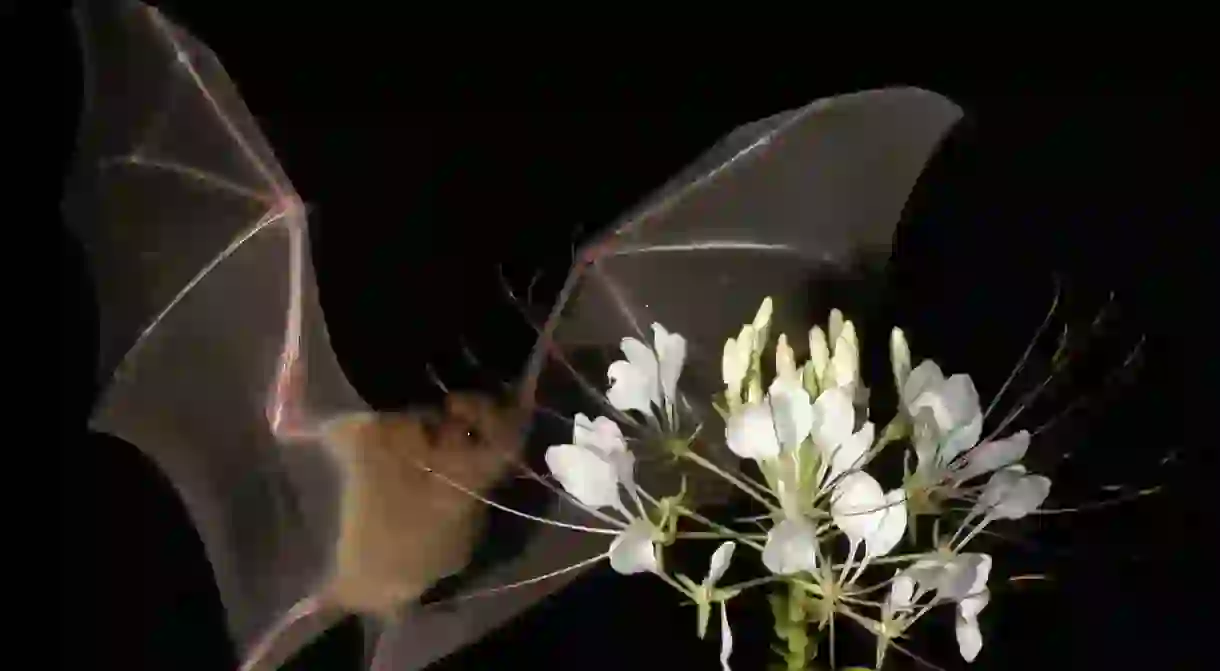This Delicious Tequila Is Helping to Preserve Mexico’s Threatened Bat Population

Sustainability is a hot topic in the drinks world at the moment. An aspect generally overlooked until now, though, is the role bats play in agave production. A bat species is coming back from the brink of extinction because of the efforts of a notable tequila brand.
Tequila Ocho is a favorite of many bartenders. Unlike most major brands, which strive for consistency across all of their releases, Ocho produces annual vintages with an emphasis on terroir, using agave grown on different estates, each showing distinct flavors and aromas.
The current 2016 release, from the Puerta del Aire estate, features fresh, green, herbaceous notes consistent with the highlands of Jalisco. This release happens to be the brand’s first “bat-friendly” one.

We hadn’t realized until now that the lesser long-nosed bat plays a large role in pollinating more than 180 types of agave and other plants throughout Mexico. Nor did we know that most tequila companies’ typical agave harvesting practices had reduced the bats’ ability to feed, landing them on the endangered species list.
Bats feed on the quiote, or flower, of the agave plant; they’re the plant’s primary pollinators. The problem, it seems, is that agave plants are typically harvested by tequila-makers before they flower, since the plants can no longer be used to make tequila after they bloom.
The sugars that the plants have stored up during their lifetime are used up in the flowering process. With reduced sources of food, bats shifted their migratory patterns over the past few decades, and their numbers dropped precipitously.
However, Ocho—along with two other tequila producers—has pledged to allow at least five per cent of its agave plants to reach full flower, thus allowing the bats to feed. One hectare (about two and a half acres) will feed 90 bats per night, according to ecologist Rodrigo Medellin.
This is a sacrifice for the small producers because once the plants flower, they can’t be used in tequila production. The plants, which need to grow for at least eight years before they flower briefly, essentially go to waste.

Still, the efforts have led to a rebound in the bat population. The lesser long-nosed bats were added to the endangered species lists of Mexico and the U.S. in the 1990s. They were delisted in Mexico in 2015, and the U.S. has proposed removing the bats from the list this year.
The bat-friendly efforts will eventually benefit the tequila industry as well. The long-term sustainability of blue agave, the type from which tequila is made, is of interest to everyone. Right now it’s a monoculture, with all plants being nearly genetically identical clones of each other.
It’s believed that the cross-pollination by the feeding bats will reintroduce some genetic diversity to the species over the coming decades, rendering the plants more resistant to disease and the effects of climate change.
“When producers allow a percentage of five per cent of their plantations to flourish, they are pollinated by bats,” Medellin says. “When the plant life cycle is completed, not only the genetic diversity of the agaves is improved and conserved, but we also help the species of the magueyero bat, Leptonycteris yerbabuenae, to recover. In this way, bats, agave, and tequila integrate a virtuous circle in which all parties benefit each other.”
The bottles of the “bat-friendly” release are denoted with a bat hologram sticker. The brand also won the Sustainable Spirit award at Tales of the Cocktail this year.

At a time that sustainability is at the forefront of everyone’s minds, it’s fantastic to have a wildlife-friendly and great-tasting tequila to drink.













